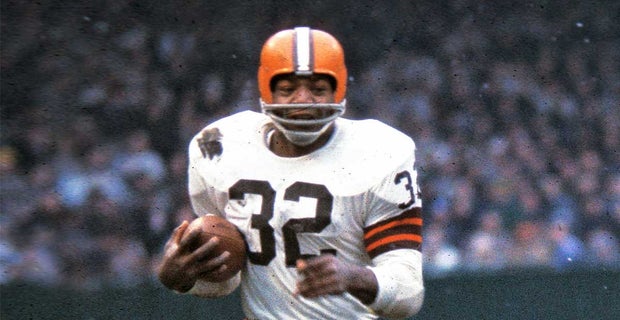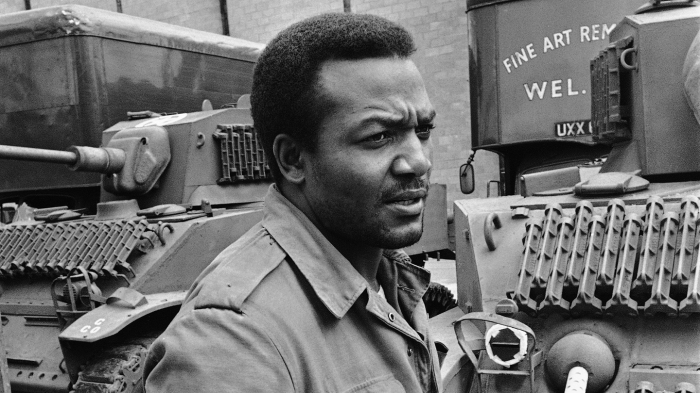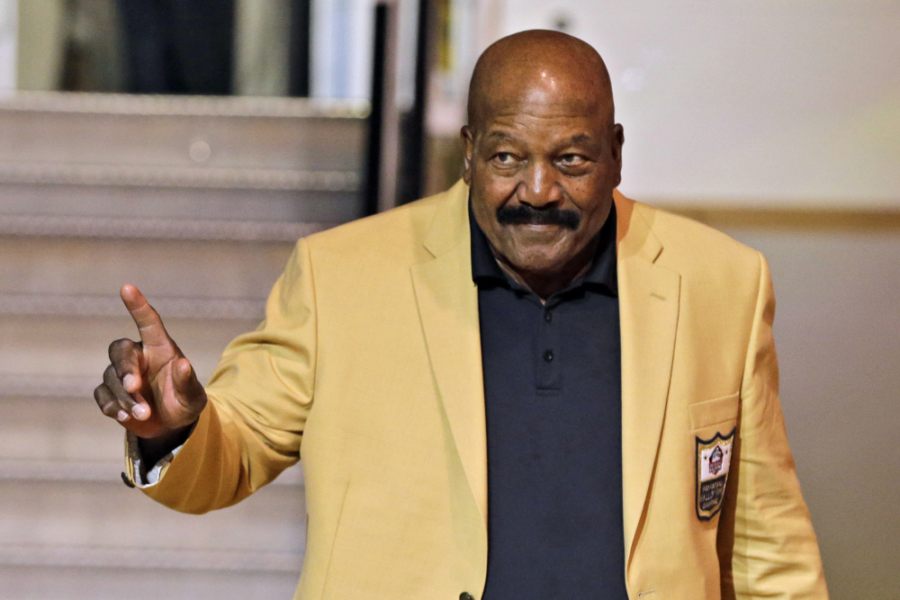Jim Brown remembered
by GEORGE SOMERVILLE
The NFL community was saddened to hear of the passing of NFL legend Jim Brown at the age of 87 in Los Angeles this week. But to call Brown a legend seems insufficient. Brown was a cultural icon, a social activist – a man that affected change. Which is why nearly 60 years after his retirement from the NFL, he is still talked about as being one of – if not THE – greatest NFL players of all time.
College superstar

Despite hailing from Georgia, Brown went to school at Syracuse in New York.
Brown was a naturally gifted athlete across many sports. While Brown is rightly remembered as the greatest running back that the Syracuse Orange have ever produced, it is also widely believed that Brown is the best collegiate Lacrosse player the US has ever seen. Brown was also a highly regarded basketball player and track athlete.
In fact so dominant a Lacrosse player was Brown that the NCAA changed the rules of the game after he scored 43 goals in 10 games.
But back to football. In three seasons and 24 games, Brown rushed for 2211 yards and 21 touchdown’s for the Orange, setting records that remain untouched today.
But the numbers alone don’t go to show just how dominant a running back Brown was. In 2020 as a part of the 150th year of College Football celebrations, a panel of 150 media members, college administrators, former coaches and players voted Jim Brown as the greatest football player in CFB history.
However, as ESPN’s Ivan Maisel wrote at the time, Brown didn’t get the recognition he deserved. In the 1956 vote for the Heisman trophy, Brown came 5th in voting. This was still the era where African American players were considered second class citizens with many Heisman voters unwilling to vote for a black player. The voting for the 1956 Heisman was marred in other controversies, not just Brown, when Notre Dame’s Paul Hornung edged out Tennessee’s Johnny Majors.
However right up until Majors’ death in 2020, his answer when he was asked (often) about whether he should have won the Heisman over Hornung. Majors answer was always that “Jim Brown should have won that year”.
Cleveland Browns World Champions

Jim Brown carried his dominant college form into the NFL. In his first year in Cleveland, Jim Brown was named the Offensive Rookie of the Year.
By 1958 he was named the League MVP and in the next three seasons, he ran for over 1,250 yards in each season.
Brown led the NFL in rushing eight times, gaining a career-best 1,863 yards in 1963. Over the course of his career he averaged 104 yards per game and 5.2 yards per carry, scoring 106 rushing touchdowns. I am sure we like to think that this new era of backs who can catch and run is something new, but Jim Brown paved the way. Aa a receiver Brown finished his career with 262 catches for 2,499 yards and a further 20 TDs.
In 1964 Brown led his Cleveland Browns to the NFL Championship Game, which they won by beating the Detroit Lions 56-10. This was the last time that the Cleveland Browns won an NFL Championship.
Jim Brown stunned the Browns and the NFL world when he announced his retirement from the game in 1956.
To this day Jim Brown remains the only player to have averaged more than 100 rushing yards in every game he played in. He was inducted into the Pro Football Hall of Fame in 1971.
Movie star and Civil Rights activist

Prior to retiring from the NFL, Brown had already embarked on an acting career and was outspoken on civil rights issues.
In fact, Brown filmed ‘The Dirty Dozen’ pre-season in 1966, and was delayed returning to Cleveland due to bad weather in London where filming was taking place. Cleveland owner Art Modell fined Brown for every week that he missed of training camp. While Brown was clearly anticipating his retirement, this episode made his mind up and Jim Brown announced his withdrawal from the game.
Brown had a very successful movie career, appearing in over 100 major motion pictures. He was considered the first black movie action hero, breaking down barriers everywhere he went.
However, it is for his views on the civil rights movement that Jim Brown is probably best remembered. In fact it’s probably hard for the modern day generation to appreciate how much of an impact a player of Brown’s calibre speaking out had on society.
During the 1950’s the US was in turmoil as segregation was being challenged and slowly starting to be removed. This was during the time when Muhammad Ali was ostracised for refusing to be drafted for the Vietnam war and had his boxing licence revoked. In a hugely symbolic but incredibly effective show of support, fellow athletes Jim Brown, Kareem Abdul Jabbar, Bill Russell and Carl Stokes publicly spoke out in defence of Ali and helped turn public opinion back in favour of the plight that the black athletes were campaigning for.
Jim Brown continued to campaign for civil rights throughout his life and founded the Black Economic Union which was set up to encourage and develop African-American entrepreneurs.
Gang relations
Jim Brown explaining why and how he built his Amer-I-Can program…. pic.twitter.com/7NGalJkydL
— Reverend good doctor JB Applesauce (@VictorySlap4700) May 19, 2023
Jim Brown also recognised the impact that gang culture was having on the black community, especially in Los Angeles, which he had come to call home after embarking on his movie career.
Brown understood the issues that the younger generation were facing and the waste of human life being lost from the violence of gang culture.
So Brown embarked on a campaign to save young lives from the violence of gangs. Amer-I-can was set up to get young gang members and ex-prisoners out of the cycle of crime and poverty. The greatest success of this program was the negotiation and agreement of the Watts truce where Brown played a pivotal role in LA’s gangs – including the Bloods and Crips agreeing to a cease in gangland killings. To this day the rapid decline in gang activity in Los Angeles is attributed to the Watts truce.
A true legend of the game
Jim Brown was inducted into the Pro Football hall of Fame in 1971, the College Football Hall of Fame in 1995 and the Lacrosse Hall of Fame in 1983.
To this day Jim Brown is the only player in NFL history to average over 100 rushing yards in every game played in during his career – 118 games. To put this into perspective neither Barry Sanders, Emmitt Smith or Walter Payton matched Brown’s career record.
Writing in tribute on the day that Jim Brown died, LeBron James wrote,
“We lost a hero today. Rest in Paradise to the legend Jim Brown. I hope every black athlete takes the time to educate themselves about this incredible man and what he did to change all of our lives. We all stand on your shoulders Jim Brown”.
Jim Brown was a ground breaker in so many ways and will be remembered rightly as a player who changed the face of the sports that he played and the communities within which he lived.
Almost every aspect of what we see in the modern day NFL can be attributed back to changes caused by Jim Brown’s play or activism. Now that is a legacy unlike any other.


GEORGE SOMERVILLE
COLLEGE FOOTBALL WRITER
A GLASWEGIAN LIVING IN LONDON, GEORGE IS A COLLEGE FOOTBALL FAN WHO FOLLOWS THE ALABAMA CRIMSON TIDE. HE PROVIDES CFB CONTENT FOR THE TOUCHDOWN AND IS ONE THIRD OF THE COLLEGE CHAPS PODCAST.
